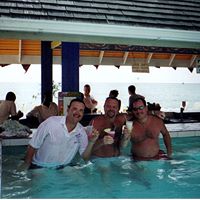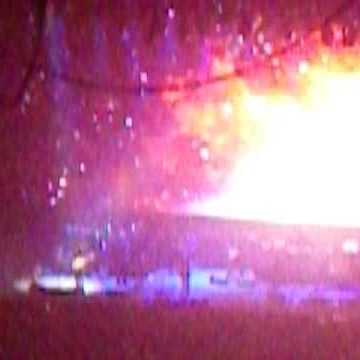Ronald Lee Bowman
age ~47
from Laguna Niguel, CA
- Also known as:
-
- Ronald L Bowman
- Ronald E Bowman
- Ronald Punte Bowman
- Ronald B Bowman
- Ron E Bowman
- Ronal D Bowman
- Ronald N
- Ronald Lee E
- Bowman Ronald Punte
- Ronald Punte
Ronald Bowman Phones & Addresses
- Laguna Niguel, CA
- Annapolis, MD
- Myrtle Beach, SC
- Merrifield, VA
- Belvedere, CA
- Los Angeles, CA
- Newport Beach, CA
- Pensacola, FL
- San Diego, CA
Medicine Doctors

Ronald R. Bowman
view sourceSpecialties:
Orthopaedic Surgery
Work:
Tigard Orthopedic & Fracture Clinic
9445 SW Locust St, Portland, OR 97223
(503)3521313 (phone), (503)3521314 (fax)
9445 SW Locust St, Portland, OR 97223
(503)3521313 (phone), (503)3521314 (fax)
Education:
Medical School
Oregon Health & Science University School of Medicine
Graduated: 1985
Oregon Health & Science University School of Medicine
Graduated: 1985
Procedures:
Arthrocentesis
Shoulder Arthroscopy
Shoulder Surgery
Shoulder Arthroscopy
Shoulder Surgery
Conditions:
Fractures, Dislocations, Derangement, and Sprains
Internal Derangement of Knee Cartilage
Rotator Cuff Syndrome and Allied Disorders
Internal Derangement of Knee
Internal Derangement of Knee Ligaments
Internal Derangement of Knee Cartilage
Rotator Cuff Syndrome and Allied Disorders
Internal Derangement of Knee
Internal Derangement of Knee Ligaments
Languages:
English
Description:
Dr. Bowman graduated from the Oregon Health & Science University School of Medicine in 1985. He works in Portland, OR and specializes in Orthopaedic Surgery.
Lawyers & Attorneys

Ronald Bowman - Lawyer
view sourceOffice:
Racioppo, Zuber, Coetzee, Dionne, LLP
Specialties:
Business Law
ISLN:
908877025
Admitted:
1967
Name / Title
Company / Classification
Phones & Addresses
Principal
Bluepoint Race Management Timing and Tra
Management Services
Management Services
598 Pinedale Dr, Annapolis, MD 21401
Treasurer
TWO DAVID CIGARS, INC
Principal
Kensington Motors
Ret Misc Vehicles · Auto Repair
Ret Misc Vehicles · Auto Repair
3840 Dupont Ave, Kensington, MD 20895
(301)9492998
(301)9492998
US Enforcement Agency LLC
Detective/Armored Car Services
Detective/Armored Car Services
2791 Homecoming Ln, Waldorf, MD 20603
(240)4918351
(240)4918351
Us Patents
-
Disposable Transducer Systems
view source -
US Patent:46116010, Sep 16, 1986
-
Filed:Feb 17, 1984
-
Appl. No.:6/581481
-
Inventors:Ronald Bowman - Laguna Beach CA
-
Assignee:Transamerica Delaval Inc. - Lawrenceville NJ
-
International Classification:A61B 502
-
US Classification:128673
-
Abstract:Methods and systems for operating a disposable transducer or other disposable apparatus, which may be subject to sterilization inimical to that disposable apparatus, determine parameters required for operation of the disposable apparatus and provide a record of that determined parameters on the disposable apparatus. These parameters are subsequently derived by machine-reading the record on the disposable apparatus in order to operate that disposable apparatus. The mentioned record may be made destructible by resterilization and the machine-reading and the operation of the disposable apparatus may be rendered impossible upon resterilization of that apparatus by destroying the mentioned record by said resterilization.
-
Pressure Transducing And Methods And Apparatus For Filling A Cavity
view source -
US Patent:42917018, Sep 29, 1981
-
Filed:Jul 11, 1978
-
Appl. No.:5/923600
-
Inventors:Ronald Bowman - Laguna Beach CA
-
Assignee:Bell & Howell Company - Chicago IL
-
International Classification:A61M 500
-
US Classification:128675
-
Abstract:Methods and apparatus for filling a cavity with a liquid from a hypodermic needle through a port provide the port with a straight passage leading to the cavity either directly or through a laterally offset further passage. The needle is partially inserted into the straight passage of the port. The partially inserted needle is stopped by engagement inside the port short of the cavity while an overflow and gas escape path is provided through the straight passage along the outside of the stopped partially inserted needle.
-
Transducer Systems With Overload Protection
view source -
US Patent:45520232, Nov 12, 1985
-
Filed:Sep 28, 1983
-
Appl. No.:6/536490
-
Inventors:Ronald Bowman - Laguna Beach CA
Michael T. Zimmerman - Arcadia CA
Robert A. Rich - Yorba Linda CA -
Assignee:Transamerica Delaval Inc. - Lawrenceville NJ
-
International Classification:G01L 708
-
US Classification:73715
-
Abstract:A transducer diaphragm overload protection system provides a core of insulating material for supporting a sensor and being movable relative to a deflectable diaphragm portion, and establishes a mechanical interconnection between that deflectable portion of the diaphragm and that movable core, while that core is in a movable condition. The movable core is rendered stationary relative to the diaphragm, and the mechanical interconnection is removed by establishing between the deflectable diaphragm portion and the core a gap corresponding to a predetermined diaphragm deflection, while maintaining the core stationary relative to the diaphragm. Advantageously, in pressure transducers having a ceramic core for supporting the transducer sensor, the desired gap may then be established by locating a dissolvable shim between the core and the diaphragm, while such core is movable, and by thereafter dissolving such shim after the core has become set in the transducer. Alternatively, the diaphragm may be deflected by application of an overpressure, whereby the core is moved into the desired position, and the necessary gap may thereafter be established by relaxing the diaphragm after the core has become set in the transducer.
-
Folded Beam Structure Utilization Methods And Apparatus
view source -
US Patent:41999800, Apr 29, 1980
-
Filed:Oct 30, 1978
-
Appl. No.:5/955853
-
Inventors:Ronald Bowman - Laguna Beach CA
-
Assignee:Bell & Howell Company - Chicago IL
-
International Classification:G01L 500
-
US Classification:73141A
-
Abstract:A force is translated into a pair of oppositely acting moments or electric signals up to a limited magnitude of that force by means of a folded beam structure which has a first leg presenting a first end of the folded beam structure, and a second leg, shorter than the first leg, presenting a second end of the beam structure. The first end is maintained relatively stationary and the force to be transduced is applied to the second end of the folded beam structure. The second leg is thereby moved with the applied force and there is thus applied on the first leg a first moment acting in a first portion of the first leg on one side of the second end and a second moment acting oppositely to the first moment in a second portion of the first leg on another side of the second end. According to the invention, overloading of the first leg is prevented by limiting the travel of the second leg against movement of that second leg by the applied force.
-
Electrostatically Bonded Pressure Transducers For Corrosive Fluids
view source -
US Patent:47377569, Apr 12, 1988
-
Filed:Jan 8, 1987
-
Appl. No.:7/001408
-
Inventors:Ronald Bowman - Laguna Beach CA
-
Assignee:Imo Delaval Incorporated - Lawrenceville NJ
-
International Classification:G01L 122
-
US Classification:338 4
-
Abstract:Differential transducers for corrosive or electrically conductive fluids have a first tube for guiding such fluids toward one side of a semiconductor diaphragm containing embedded strain gages, and a second tube for guiding such fluids toward an opposite side of that semiconductor diaphragm. These tubes are made of an electrically insulating material temporarily convertible to an electrical conductor for electrostatic bonding. The semiconductor diaphragm is provided in a semiconductor wafer extending beyond the perimeter of at least the first tube. The strain gages are provided with embedded electrical leads extending beyond the above mentioned perimeter for attachment of electrical contact wires outside the first tube, while providing these leads inlaid in the semiconductor wafer at least in a region to be covered by the first tube. The wafer including the semiconductor diaphragm is integrally sandwiched between layers of material providing electrical conduction for electrostatic bonding at the tubes and electrical insulation and isolation of the diaphragm and strain gages from corrosive or electrically conductive fluids guided toward the diaphragm by the tubes. Each of the tubes is temporarily converted to an electrical conductor, and these first and second tubes are electrostatically bonded to the above mentioned layers with the aid of the above mentioned electrical conduction, to form the tubes, layers and wafer with semiconductor diaphragm, strain gages and electrical leads into an integrated bonded structure.
-
Pressure Transducing Methods And Apparatus
view source -
US Patent:43656358, Dec 28, 1982
-
Filed:Mar 3, 1981
-
Appl. No.:6/239921
-
Inventors:Ronald Bowman - Laguna Beach CA
-
Assignee:Bell & Howell Company - Chicago IL
-
International Classification:A61M 500
-
US Classification:128675
-
Abstract:Methods and apparatus for handling a compatible solution relative to a circulatory system of a living organism employ a recipient device having a circular cavity tending to retain gas bubbles. A pocket communicating with an opening for injecting the compatible solution is provided in the circular cavity. A unidirectional jet of the injected solution is formed by blocking flow of the injected solution at a closed end of the pocket, thereby forming a pressure head in the pocket. The injected solution is then ejected through an outlet of the pocket and is swept in a swirling motion along a boundary of the cavity, thereby wiping gas bubbles from such boundary, for bleeding to atmosphere.
Resumes

Owner At Bluepoint Race Management, Timing & Coaching Llc
view sourceLocation:
Baltimore, Maryland Area
Industry:
Sports

Ronald Bowman
view source
Ronald Bowman
view source
Ronald Todd Bowman
view source
Ronald Bowman
view source
Ronald Bowman
view source
Ronald Bowman
view source
Ronald Bowman
view sourceYoutube
Myspace
Flickr

Ronald Bowman
view source
Ronald Bowman
view source
Ronald Bowman
view source
Ronald Bowman
view source
Ronald Bowman
view source
Ronald Leroy Bowman
view source
Ronald E Bowman
view source
Ronald Bowman
view sourceGoogleplus

Ronald Bowman
Lived:
Annapolis, MD
Farmington, New Mexico
Farmington, New Mexico
Work:
Bluepoint Race Management, Timing &Coach - Race Managment/Timing;Triathlon/Run coach
Retired Navy, retired NASA
Retired Navy, retired NASA
Education:
U.S. Navel Academy

Ronald Bowman

Ronald Bowman

Ronald Bowman

Ronald Bowman

Ronald Bowman
Classmates

Ronald Bowman (Bowman Jr.)
view sourceSchools:
Friendly High School Ft. Washington MD 2004-2008
Community:
Marc Ferrara, Jeffrey Bolton, Cindi Jones

Ronald Bowman
view sourceSchools:
Lake Elementary School Pascagoula MS 1948-1954
Community:
Lynn Kenyon, Jill Samuels, Renee Carolan

Ronald Bowman
view sourceSchools:
Kingman/Mohave County Union High School Kingman AZ 1984-1988
Community:
Joe Shaeffer, Roberta Bobbi, Jeroldine Penrod, Bonnie Stayner

Ronald Bowman
view sourceSchools:
Taylorsville High School Taylorsville KY 1970-1974
Community:
David Hilbert, Martha Curtsinger, Ann Lutz

Ronald Bowman
view sourceSchools:
Mangham High School Mangham LA 1991-1995
Community:
Lillian Laird

Ronald Bowman
view sourceSchools:
Hampton Elementary School Milwaukee WI 1963-1970, John Muir School Milwaukee WI 1971-1974
Community:
Kathryn Kondziella, Brian Blackburn

Ronald Bowman
view sourceSchools:
Shamokin Area High School Shamokin PA 1963-1967
Community:
Treina Beck
Get Report for Ronald Lee Bowman from Laguna Niguel, CA, age ~47




















